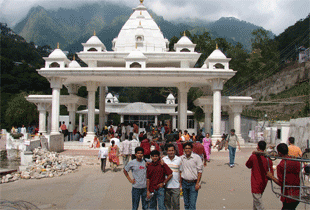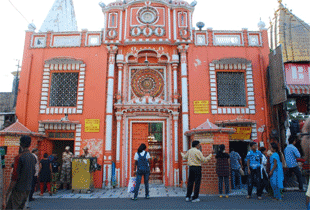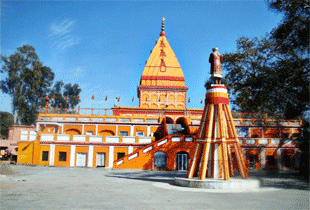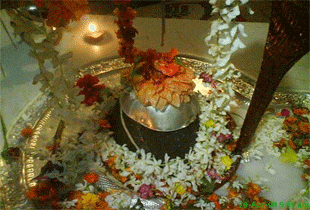Jammu, India
Jammu is popularly known as the city of temples. It serves as a conversion zone between the mountainous Himalayan ranges and the plains of Punjab. The city is the winter capital of the state of Jammu & Kashmir. It is said that Raja Jamboo Lochan established the city. The city was previously called as Jamboo, after him. As soon as the time passed, the city started being known as Jammu. There are several temples in the city. There is a very famous temple of Maha Kali, which is situated inside the Bahu Fort complex. Jammu region is called as Duggardesh locally.
The city of Jammu has come to be recognized for the several holy places in and around the city. The temples of the city surpass its other attraction, including palaces, forts, and forests, etc. Additionally, Jammu enjoys rich cultural heritage of various religions like Hindu, Islam and Sikh. Along with a number of temples at the heart of the city, one can come across other sightseeing places like striking forests, waterfalls and rivulets in the surrounding areas. The city offers a complete package to its visitors. Read Jammu travel guide to get maximum information about this religious city.
Visit in Jammu
Tourist attractions in Jammu mainly comprised of various religious places. However, there are some other great places to visit in and around the Jammu city. Explore in detail about some of the most popular places to see in Jammu:
Vaishno Devi is one of the holiest Hindu temples in close proximity of Jammu city. The temple is dedicated to Shakti and one of the oldest and famous shrines of India. It is situated at a height of 5305 feet on the holy Trikuta Hills of the Shivalik Hill Range. The holy cave is 12 Km away from its base camp Katra and 65 km from Jammu.
This is a very famous temple of the Hindus and one of the largest temples of the Northern part of India. Ranghunath Temple is dedicated to Lord Rama, who is said to be an incarnation of Lord Vishnu. The temple is surrounded by several other temples and each of them is dedicated to any God and Goddesses. The temple is visited by a number of devotees and the whole atmosphere of the temple is very sacred. It gives the visitors absolute peace of mind.
Among the various temples, Lakshmi Narayan Temple is one of the popular Hindu Temples. Lakshmi Narayan Temple was built by Raja Jambu Lochan. The temple is dedicated to Goddess Lakshmi and Lord Narayan. Thousands of devotees visit this holy place and to take blessings of the god and goddess.
Constructed by Maharaj Ranbir Singh in 1883, Ranbireshwar Temple is dedicated to Lord Shiva. The shrine is home to a 7.5 feet high central Shiva Lingam, along with 12 small Shiva Lingams of crystal. The galleries of the shrine are decorated with a number of Shiva Lingams dotted on stone slabs.
Located in the heart of the city, Ziarat Peer Mitha is a famous mosque. It also features the tomb of Pir Ziarat, who was mainly famous as Peer Mitha. He started being known so due to readily accepting even a pinch of sugar as offering.
It is another famous pilgrim attraction in Jammu. This cave is located on the Circular Road of Jammu and is well-known for a naturally created Shiva Lingam. As per the legend, the underground routes to this cave take it to other cave shrines of Jammu.
Amar Mahal Palace was constructed by a French architect for Raja Amar Singh, belonging to the Dogra dynasty. The palace is made of red sand stone and is situated on the right bank of the Tawi River. The palace has now been converted into a museum. There is a library in the palace as well, which has more than twenty thousand books. You will find books on philosophy, religion and political science apart from fiction. Another attraction of this palace is the suite of Maharani Tara Devi.
Situated in the Pink Hall of Mubarak Mandi complex, the museum displays about 800 exceptional paintings of the Basoli, Jammu and Kangra schools of paintings. These are the main collection of the museum. There is another beautiful feature of this museum that is a gold plated bow and arrow of the Mughal emperor Shah Jahan. The museum also exhibits a range of carpentry tools, hand written manuscripts of several emperors.
Ranbir Canal is situated about 2 km away from the heart of the city. The canal is renowned for a small garden that is an ideal picnic spot for the locals and travelers during summer season. All through the year, the water of the canal remains very cold and freezing. The banks of the canal offer great views to the visitors.
Bahu Fort is one of the famous sightseeing places in Jammu, which is situated on a bank of Tawi River. It is one of the oldest structures in the city, which was initially constructed by King Bahulochan more than 3,000 years ago. Afterward the fort was restored by the Dogra rulers. The fort is surrounded by gardens, which are known as Bagh-e-Bahu. The fort has a temple of Goddess Kali.
Mubarak Mandi Palace is a perfect amalgamation of Rajasthani, Mughal and European architecture. The oldest structure of the palace complex dates back to 1824. It has a Pink Hall, which has been converted into a museum now and called as the Dogra Art Museum. It features a beautiful miniature painting of different hill schools. However, the most splendid structure of the complex is the Sheesh Mahal (Mirror Palace).
Surinsar Mansar Wildlife Sanctuary is bordered through two lakes of Surinsar and Mansar. It is named after these two lakes only and spread over an area of 98 km². In the sanctuary, one can come across 8 species of mammals and 15 species of birds.
Located by a riverside, Rani Charak Mahal is another important attraction of the city. It is connected with Toshakhana on one side.
Jammu, India

Mid-March to June, warm yet pleasing
Temperature:28°C- 45°C

July to September, average annual rainfall
Annual rainfall -61 cm.

Last November to February, Chilled and Freezing
Temperature:15°C- 7°C
Sights of Jammu



